
of the Acopian Center for Conservation Learning, pg. 8 AUTUMN 2022Celebrating the 20th Anniversary
MISSION STATEMENT
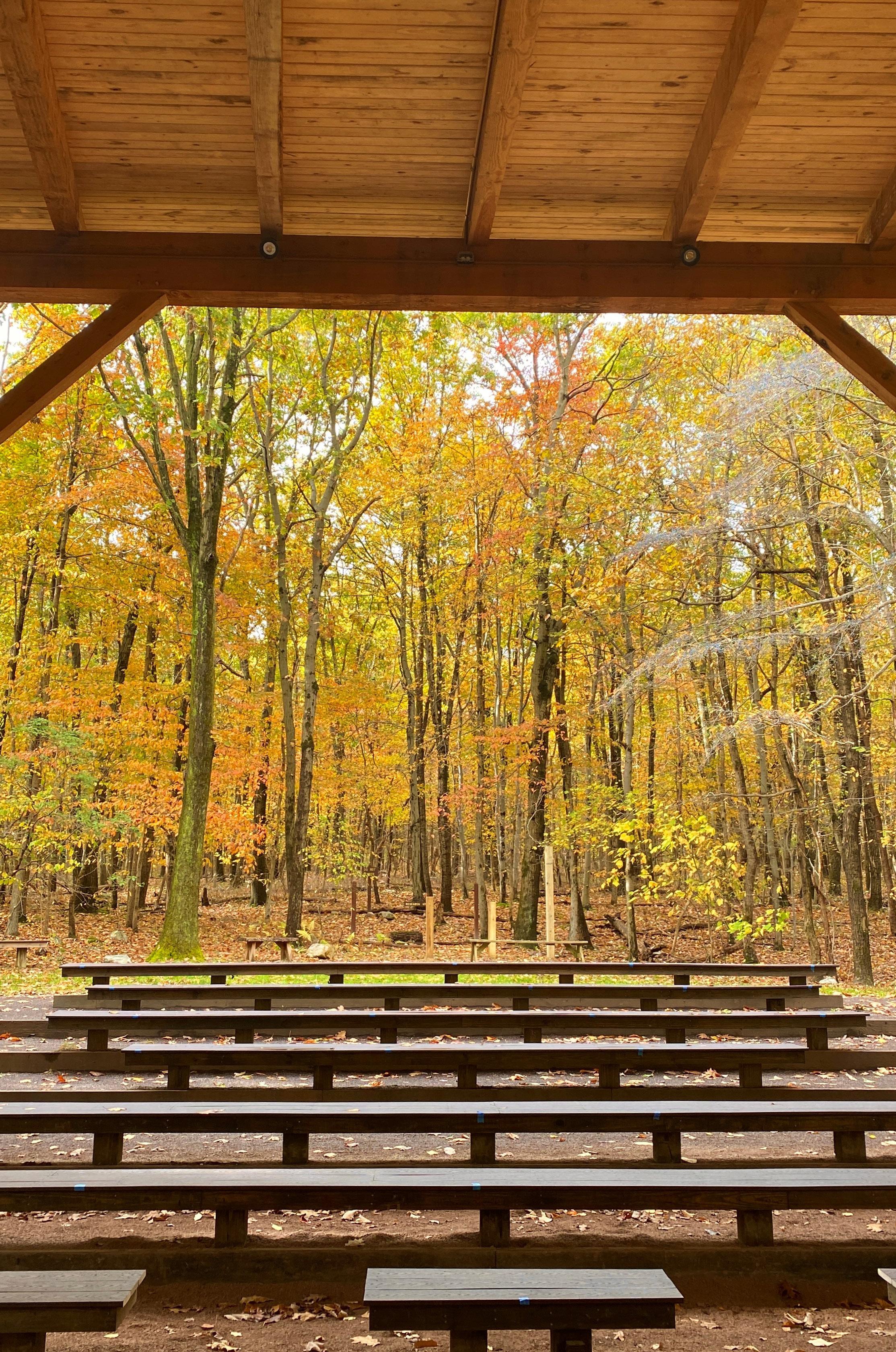
The mission of Hawk Mountain Sanctuary Association is to conserve birds of prey worldwide by providing leadership in raptor conservation science and education, and by maintaining Hawk Mountain Sanctuary as a model observation, research, and education facility.

AUTUMN 2022 • HAWKMOUNTAIN.ORG 1 TOP OF THE MOUNTAIN Education: The Key to Conservation RIDGE CURRENTS News & Notes RPI Website Launch Invasive Worm Research FIELD NOTES Acopian Center 20 th Anniversary A NEW VISION FOR VISITORS SCHOOL IN THE CLOUDS New Avian Ambassadors Spring & Summer 2022 Education Trainees COMMUNITY SPOTLIGHT IN FLIGHT The Mystery of the Weeping Eagle SPRING REPORT Spring Hawk Watch Summary Nature Notes ON THE WING Spring & Summer 2022 Science Trainees UP & COMING CONSERVATIONIST Tamara Russo HAWK MOUNTAIN HAPPENINGS Autumn Lecture Series Upcoming Events LEAVE A LEGACY Rob & Kareen Canora FINANCIALS & ACCOUNTABILITY 2021-2022 MOUNTAIN FRIEND Steve Tricarico 2 4 8 12 16 20 22 26 28 32 36 38 39 40 COVER PHOTO by Rebekah Smith AUTUMN 2022 NUMBER 137 WITNESS THE MAGIC OF MIGRATION Autumn Hawk Watch held daily through December 15 CONTENTS Photo by Bill Moses
EDUCATION: The Key to Conservation

In 2006, the family of George and Betty Hand stepped forward to set up an Education Endowment to sustain ongoing Sanctuary education in perpetuity. While it slowly grew over time, 16 years later our goal of a $1 million Education Endowment remained one of our most elusive accomplishments. That recently changed thanks to the addition of more than $500,000 from the funds of two visionary donors. We’ve now exceeded the half-way mark!
All conservation is rooted in education.
When someone learns about the importance of a species or habitat and its associated challenges, it raises awareness and inspires action. Our work is rooted in science; we study raptors and their habitats. When we educate visitors, passing along findings in various formats including soundbites via social media, blogs and podcasts, live programs, or publications, those forms of education move people to act. It is the most important part of the Hawk Mountain model.
Case in point, this year we broadened our “Conserve the Corridor” initiative to include broad based education throughout the Mesoamerican corridor. We brought together ten organizations, such as Pronatura Veracruz’s River of Raptors, and are collaborating with our partners to establish common curricula that includes our brand-new Spanish language Flight Guide. It is a joint effort, with significant leadership from former trainees who work at these count sites. Generous donors supported this work, too. Connecting the largest raptor migration corridor in the world directly to the local people and countries through education will raise awareness and lead to future raptor conservation.
So, if education is so important, then why is it so hard to fund? Part of the challenge is that education, by its very nature, is intangible. If you donate to a capital campaign, you can point to a building or exhibit and see your gift, knowing that you contributed to a lasting resource. If you support scientific research, you may help uncover the decline of the American kestrel, track a raptor over its lifespan, or read about findings in scientific journals or other publications.
2 AUTUMN 2022 • HAWKMOUNTAIN.ORG
TOP OF THE MOUNTAIN
All the science in the world, as an end to itself, will not enlighten people to make better choices about the importance of preserving habitats and saving a species. Sharing science through education raises awareness, broadens perspectives, and leads to support. Education is the key to conservation.
Thanks to our recent influx of funds to the Education Endowment, the time is ripe to attain our long-standing $1 Million goal. I hope you will consider matching the vision of the Hands, our two recent supporters, and the others who helped build this fund over time and consider a pledge or planned gift today. Please call me anytime to learn more.
Yours in Conservation,
Sean Grace PRESIDENT

STAFF
PRESIDENT Sean Grace
SARKIS ACOPIAN DIRECTOR OF CONSERVATION SCIENCE Laurie Goodrich, Ph.D.
SENIOR SCIENTIST AND GRADUATE STUDY DIRECTOR Jean-François Therrien, Ph.D.
SENIOR RESEARCH BIOLOGIST David Barber
BIOLOGIST-NATURALIST Bracken Brown
RESEARCH BIOLOGIST Rebecca McCabe, Ph.D.
SCIENCE-EDUCATION OUTREACH COORDINATOR Rebekah Smith
ACOPIAN CENTER OPERATIONS COORDINATOR Wendy Nicodemus
DIRECTOR OF EDUCATION Jamie Dawson
EDUCATORS Riley Davenport Aaron Prince
DIRECTOR OF SANCTUARY STEWARDSHIP Todd Bauman

SANCTUARY STEWARDS Stephen Wade Noah Rauch
DIRECTOR OF DEVELOPMENT Mary Linkevich
MEMBERSHIP & VOLUNTEER MANAGER Tammy Jandrasitz-Bodey
COMMUNICATIONS SPECIALIST Gigi Romano
DEVELOPMENT ASSISTANT Annie Trexler
BUSINESS MANAGER Shelley Davenport
BOOKSTORE MANAGER Mary-Therese Grob
BOARD CHAIRMAN
Tom Kerr
VICE CHAIRMAN David Bonenberger
TREASURER Peter Bennett
SECRETARY Wendy McLean, Esq.
EXECUTIVE COMMITTEE Sara Nicholas Jeff Weil
Edwin Baldridge Ana Maria Castaño
Deborah Edge, M.D.
Stephen Edge, M.D.
Peter Fontaine
Jeff Goldenberg
Ken Hawkinson, Ph.D. Richard W. Holt
Diane Husic, Ph.D.
Ernesto Ruelas Inzunza, Ph.D.
Nasreen Kara
Holly Merker
Sally O’Byrne
Amy Ruszala
Ferdinand Thun, Emeritus Member
Minturn Wright, III, Emeritus Member
PRINTING

AUTUMN 2021 • HAWKMOUNTAIN.ORG 3
• ALLEGRA LEHIGH VALLEY DESIGN •
TAYLOR
VAN
KOOTEN
SANCTUARY ACCOLADES
For its conservation legacy and its contributions to women’s history, on April 8, 2022, Hawk Mountain Sanctuary was listed on the National Register of Historic Places. This designation follows more than a decade of work toward the listing, with renewed efforts in 2019 and enormous assistance from the Pennsylvania State Historic Preservation Office. The Sanctuary is listed with designations in both Conservation and Women’s History.

INCLUSION, DIVERSITY, EQUITY AND ACCESSIBILITY
Ten young people received scholarships established to remove financial barriers for participation in Summer Nature Day Camp and the new Appalachian Ecology Course designed for teens. Support was provided thanks to the Hawk Mountain IDEA Fund, established to encourage access and drive equity in the outdoors, support underrepresented communities in discovering the Sanctuary and raptors, and to address issues of representation and barrier removal. To learn more, click the “IDEA” tab on hawkmountain.org.
FOLLOW US!

Last year, Hawk Mountain’s communications and education departments teamed up to launch a new Tik Tok account. Follow us @hawk_mountain to meet our education birds, see views from the trails and lookouts, and learn more about the different research being done by and at the Sanctuary.




NEWS & NOTES
BOARD UPDATES
In June the board of directors welcomed new member Nasreen Kara of Wayne, PA, who serves as head of supplier management at Vanguard. She brings to the Sanctuary a wealth of knowledge in team building, product development, and cross-functional team leadership.

CORRIDOR COLLABORATION
The Conserve the Corridor collaborations are ongoing! Hawk Mountain is working with different sites along the Western Hemispheric migration flyway to share and disperse raptor conservation outreach materials. This international collaborative team recently finished and published a Spanish language raptor Flight Guide, along with other tools to reach local people in their own communities.
AWARD-WINNING STEWARDSHIP
Last winter the “Stew Crew” rerouted a quarter-mile section of the remote Skyline Trail to protect sensitive habitat. The result is a new access trail with railings that leads to the East Rocks Overlook and with finishes hand-crafted in the field. The Stewardship Team thanks you for supporting their ongoing work to protect critical habitat from human impact, including foot travel. Watch a video recap of this work at youtube.com/hawkmountainPA.
This past June, Hawk Mountain offered the brand-new Appalachian Ecology Course, a 10-day, immersive experience for teens interested in a career in conservation. Led by the Stewardship Team, the participants engaged in a variety of hands-on research, recreation, and field skills development. Discussions for a 2023 course are already underway.

ACADEMIC INTERNS
This summer, the Communications Department welcomed three interns to assist with content creation for both promotional and educational outputs: Amanda O’Donohue and Mia Keszczyk from Kutztown University and Laura Berry from Millersville University. Amanda and Mia worked together to create social media content, merchandise advertisements, marketing emails, and several other promotional materials. Laura worked closely with the science and stewardship teams, documenting their current research efforts in the field and beyond to share with a broad audience.
The Sanctuary’s Fall Photo Contest is open once again for submissions. Professionals and amateurs alike can submit any photos taken of the flora, fauna, and lookouts at Hawk Mountain. Photos must be taken on Sanctuary grounds and be free of heavy editing, filtering, or other manipulation. See details and rules at hawkmountain.org/ photocontest. Submissions close on Monday, December 19.
AUTUMN 2022 • HAWKMOUNTAIN.ORG 5
PHOTO CONTEST
NEW WEBSITE LAUNCH for Hawk Mountain Collaboration, the Raptor Population Index
 By Rebekah Smith, Science-Education Outreach Coordinator
By Rebekah Smith, Science-Education Outreach Coordinator
The Raptor Population Index (RPI), a collaboration between Hawk Mountain Sanctuary, Hawkwatch International, Hawk Migration Association of North America (HMANA), and Birds Canada, has launched a new website to share up to date raptor population trends. RPI’s migratory raptor trend analyses represent the forefront of cutting-edge population science, created for use by researchers, policymakers, and stakeholders as an index of raptor population health. The new website serves to share this valuable information with updated accessibility features, convenient navigation, and a photo gallery to highlight the migratory raptors and the count sites that have contributed to the raptor population dataset.
Jason Sodergren, Hawkcount Database Manager, developed new interactive maps and trend graphs that will help viewers navigate visual RPI data with ease. All RPI data is open source and easily downloadable. Custom web designs from Mojo Interactive, who also worked to design Hawk Mountain Sanctuary’s website, give the new RPI website a sleek and appealing look.
An exciting feature of the updated RPI website are two new sections that will further highlight the results of the raptor population assessments. Raptors at Risk is an added header that will allow viewers to access a list of the most at risk species, determined by the RPI trend analysis based on migration counts and the Christmas Bird Count wintering surveys during 2009 to 2019. Raptors on the Rise is the second website addition; this new header will allow readers to learn more about the raptor populations that are increasing
and highlight conservation successes. It will include the species showing the highest number of increasing trends from the same 10-year analysis.
Hawk Mountain Director of Conservation Science Dr. Laurie Goodrich serves as Co-Chair of the RPI Steering Committee and helped to spearhead the creation of the new website. Rebekah Smith, Hawk Mountain Science & Education Outreach Coordinator, led writing efforts for the species assessments and new sections. Dr. Goodrich states, “We are excited to make raptor population trend information more accessible to the public and wildlife agencies. It is our hope the new RPI website spurs increased research and conservation for North America’s raptors, as several species clearly need more attention.”
The RPI website update has been made possible due to a generous donation by Al Douglass, a former Hawk Mountain board member. If you would like to support projects like the RPI collaboration, please contact Dr. Laurie Goodrich, goodrich@hawkmountain.org, or Mary Linkevich, linkevich@hawkmountain.org.
To explore RPI’s new website, visit rpi-project.org. To hear more about RPI, listen to episode 10 of The Hawk’s Call at hawkmountain.org/the-hawks-call-podcast or on your favorite streaming service.

6 AUTUMN 2022 • HAWKMOUNTAIN.ORG RIDGE CURRENTS
The website’s homepage has a sleek new look, featuring a photo of a golden eagle, taken by Dave Brandes, member of the RPI steering committee and Professor of Civil & Enviromental Engineering and Chair of the Integrative Engineering Program at Lafayette College in Easton, PA.
STUDYING INVASIVE
EARTHWORMS

 By Laura Berry
By Laura Berry
Hawk Mountain Sanctuary’s invasive earthworm and stiltgrass impact study has officially begun. In collaboration with Dr. Chris Sacchi of Kutztown University and with a grant from the PA Bureau of Forestry, secured by Sarkis Acopian Director of Conservation Science Dr. Laurie Goodrich, the science and stewardship team has already made multiple treks up mountainous terrain to set up the 14 study sites across Hawk Mountain Sanctuary (8) and Weiser State Forest (6). Half of these sites are heavily impacted by nonnative stiltgrass and other invasive flora, while the other half are considered to be nonimpacted. Sampling sites are located at areas of both high and low elevation. The first of these studies surveyed ground nesting birds and forest regeneration, and then the team began to take soil samples and gather invasive worm specimens.
In May and June, Senior Research Biologist David Barber, along with conservation science trainees, surveyed all 14 sites twice for ovenbirds and black-and-white warblers. In June and July, Dr. Sacchi and trainees from stewardship and conservation science surveyed each plot for tree seedling regeneration and cataloged the overstory trees. Since June, the stewardship team has been busy collecting soil samples at impacted and nonimpacted sites for comparison of chemical makeup. Careful not to contaminate nonimpacted soil with impacted soil, the samples are taken to the Acopian Center to dry before being sent to Penn State University’s Agricultural Analytical Services Laboratory for soil chemistry testing.
Along with soil testing, Hawk Mountain’s stewardship team is also collecting earthworm specimens for the purpose of identifying species and abundance in impacted and nonimpacted areas. The project is assessing the impacts of earthworms on forest regeneration and how, from an ecological perspective, they affect native trees, salamanders, and ground-nesting birds. The team recently had a lesson from Dr. Nicholas Henshue, Assistant Professor of Ecology at SUNY at Buffalo, who provided instruction on how to collect and preserve the specimens. The process involves the collection of earthworms from the same impacted and non-impacted sites, using a mustard and water mixture to draw them to the surface. From there, the worms are taken to the Acopian Center, where they are humanely euthanized and preserved in formaldehyde for the purpose of species identification.
The results of the preliminary worm sampling will be presented at the Acopian Center by Brent Beougher, an animal sciences and psychology major at Ohio State University and current Hawk Mountain Steward. Brent, along with Hawk Mountain’s Director of Stewardship Todd Bauman, have spearheaded this project from the start. Hawk Mountain Sanctuary and Kutztown University will continue this study into 2023, with all findings eventually summarized in a scientific paper.

AUTUMN 2022 • HAWKMOUNTAIN.ORG 7
20 YEARS OF CONSERVATION
By Mary Linkevich
This year Hawk Mountain Sanctuary celebrates the 20th anniversary of the opening of its Acopian Center for Conservation Learning, a three-building campus and scientific headquarters that opened in September 2002.

“Hawk Mountain has always had bold ideas. We only lacked the support to make them happen,” says Sanctuary President Sean Grace.
The Acopian Center is named for its benefactor, the late Mr. Sarkis Acopian, the single largest donor in Hawk Mountain history and the person who provided the funds to purchase the land, construct the buildings, equip a world-class facility, and establish a maintenance endowment to ensure its continued upkeep. The facility is named in honor of Mr. Acopian and the Acopian family.

Less than one year after receiving Mr. Acopian’s gift, the Sanctuary’s professional team had moved nearly half of its staff and all its extensive library holdings and field equipment into the new Research Center, welcomed the facility’s first class of trainees, dedicated the building, and was up and operational.
But Mr. Acopian wasn’t finished. The following year he made a lead gift to launch a study of hemispheric turkey vulture movement ecology, work that continues today, and in 2004, he endowed the Sarkis Acopian Director of Conservation Science, a gift that allowed the Sanctuary to hire a
8 AUTUMN 2022 • HAWKMOUNTAIN.ORG FIELD NOTES
“The Acopian Center was a game changer for us, and it helped a local nonprofit launch a sustained international impact in global raptor conservation.”
−Dr. Laurie Goodrich, Sarkis Acopian Director of Conservation Science
second Ph.D. level scientist. His generosity enabled Hawk Mountain to train even more of the best and brightest young conservation scientists globally and inspired the board to increase its trainee endowment, adding another $1.3 million to fully fund the program at its now expanded level.
“Today the Sanctuary’s science team includes three Ph.D. level scientists, two biologists, a science-education outreach coordinator, and an operations manager,” says Dr. Goodrich.

The facility provided tremendous infrastructure that allows Hawk Mountain to serve as a hub for information sharing and brainstorming, training, and launching new projects to better conserve raptors, local to global. In addition to its generous office and meeting space, the central Research Center houses the Julian Hill Library and Archives, which contains more than 1,500 volumes and periodicals, one of the largest collections of raptor literature in the world. Combined, the scientist and trainee residences have 16 beds in private or shared rooms with communal living and kitchen space. This helps the Sanctuary house trainees and visiting scientists and provides space to host meetings and classes. The three buildings are ADA accessible, and all boast an inspirational view of the ridge which is buffered by 60 acres of protected grasslands with mixed forest.
The Acopian Center was designed to increase Hawk Mountain’s leadership role in global raptor conservation, and specifically to expand its international

training program. Today, Hawk Mountain has graduated 465 trainees; 60 percent are female, and half are diverse, helping to grow the role of women and diversity in conservation. The facility allowed the addition of summer field experience positions for North American undergraduates, academic internships for undergraduate college and high school students, and shorter stays for young professionals.

AUTUMN 2022 • HAWKMOUNTAIN.ORG 9
Dr. Laurie Goodrich with a broadwing.
The Acopian Family at the 2002 opening.
In 2001, the team launched a Graduate Student Program to mentor and advance post-docs and Ph.D. candidates conducting independent research, which in turn furthers our knowledge of raptors and their conservation needs. In the last two years alone, the Sanctuary has helped to advance 11 doctoral and five master’s students from eight countries. More than half are former Hawk Mountain trainees.

The sheer number of accomplishments inspired more support and growth. In 2003, former board member Ben Olewine IV established the Ben Olewine Project Soar Awards program. His annual gift and planned gift ensure that Hawk Mountain can continue to support trainees after they depart by providing competitive grants of up to $3,000. The Sanctuary has since awarded 120 gifts ranging from $500 to $3,000 to help advance the work of trainees after they return to their home countries.
Similarly, former board member Jim Kushlan endowed a fund to advance the Graduate Student Program when in 2007 he established the James A. Kushlan Graduate Student Award. His gift has helped to advance the work of 17 graduate students with awards of $1,500 to $3,000
per year. Many donors have made gifts to grow the science program, including a former board member, the late Frank Masters, who provided the Sanctuary with a significant endowment to advance raptor research.
Today, Hawk Mountain scientists have also collaborated with 122 Research Associates globally, many former trainees or graduate students, and its current research projects include the far-reaching American kestrel study that includes 60 collaborators from eight states and Canada, as well as an initiative to Conserve the Corridor, a vision to connect and advance the millionraptor watchsites in Central and northern South America. Most recently, we helped to launch a new monitoring center with former trainee Esther Vallejo in Colombia and reestablished conservation efforts and outreach with former trainee Pablo Porras in Kéköldi, Costa Rica.

10 AUTUMN 2022 • HAWKMOUNTAIN.ORG FIELD NOTES
Fall 2008 Trainees on the deck of the Acopian Center
Hawk Mountain’s unique mix of scientific monitoring, education, and connecting visitors with the migration provides the perfect setting to train up and coming conservationists as it is a proven and costeffective model that has been replicated globally through the Sanctuary’s training program. Every hawk watch site in the world can trace its roots back to Hawk Mountain, and Sanctuary trainees today are directly responsible for launching raptor conservation and monitoring sites at nine locations globally and dozens across North America.
Other ongoing projects include the New World vulture study (first initiated by Mr. Acopian’s gift), ongoing research on the movement ecology of broad-winged hawks, long-term studies of Arctic raptors, the monitoring of Pennsylvania farmland raptors, and more. Global research also continues with Research Associates on the ground in Europe, South America, Africa, and Asia.
Our goals at the Acopian Center remain ambitious, and our intent is continued success. Under the direction of Dr. Goodrich, the staff intend to connect our network of trainee graduates and graduate students


and to recruit more diverse North American candidates to the program. The staff has created a database and webpage for alumni use, provided workshops and networking opportunities, established a new seminar series for continued professional development, and even hosted zoom “Happy Hours,” a virtual get-together to reconnect, update one another, and brainstorm projects.
We also look ahead to ongoing research priorities, including raising funds to Conserve the Corridor, complete vulture surveys across the Americas and distribute findings, complete the migration connectivity study of broad-winged hawks, and add a final year of kestrel study data to the new research project. Future research is needed on the decline in sharp-shinned hawks, and with the trainee project fully endowed, we also hope to endow the Graduate Student Program with a starter gift of $500,000 to ensure we continue to move young people into the field in strong leadership positions.
Our next push is to find a match of $500,000 to advance our Education Endowment to the $1 million mark so we can foster more collaboration and educational outreach across the Mesoamerican corridor. That work blends education and science, connecting the importance of the largest raptor migration corridor in the world to the people who live and work there who can further advance our mission.
AUTUMN 2022 • HAWKMOUNTAIN.ORG 11
“The Acopian Center is a special place where we get to meet, mentor, and later partner with incredible young minds and then watch their plans to conserve raptors become reality. It’s all thanks to this facility, which provides a foundation to build a better future for raptors worldwide.”
−Dr. Laurie Goodrich
Photo by David Haas
NEW VISION FOR VISITORS
Global Headquarters for Raptor Conservation
By Sean Grace
After almost 50 years, Hawk Mountain’s Visitor Center is going to get a dramatic upgrade that re-envisions the building as the headquarters for global raptor conservation, accessible to people of all abilities. The renovations will have a vaulted ceiling that runs the full length of the building, creating an open and more inviting space with raptors soaring overhead, and provide a flexible space for events, an inside multi-purpose classroom, and exhibit area.
Our new space will be accessible for people of all abilities and utilize natural light creating a brighter area with bird friendly glass. The redesigned space will be anchored by two covered spaces for visitors, one that overlooks our Native Plant Garden and a beautiful bird feeding station, and another that will create a sheltered gathering spot in front of the Visitor Center. One of our chief objectives is to create a highly functional and flexible space for larger gatherings and programs with significantly better visitor flow.
Our process began by visiting a dozen regional nature centers and similar facilities to talk with the people who work in those spaces, learning from what they liked and disliked, and where they would make changes. We went on to create a planning committee of staff and board
to facilitate discussions with stakeholders including volunteers, board, and staff; we also completed an energy audit of our existing Visitor Center. The resulting vision was presented to the board of directors at its November 2021 meeting and approved this June.

The Visitor Center will feel as though it is doubled in size once we add a floor over the downstairs gallery, creating a beautiful, light-filled space with views to the outside. The design concept addresses accessibility, enhances visitor flow, will have a more flexible store and exhibit space, and will allow for a separate entrance and exit during peak visitation.
Our collective vision will become reality. A significant upgrade to the Visitor Center is an immediate need to address aging systems and deferred maintenance and offers a chance to create flexible space that will be lighter and brighter, allow for large gatherings, and be anchored by covered outdoors areas where people can learn about and enjoy raptors. We intend to place some of our live raptor ambassadors on exhibit, relocating them closer to our visitors. Behind the scenes, we will take the opportunity to plan for future growth of staff and trainees. In short, this work will be an invaluable longterm investment.
12 AUTUMN 2022 • HAWKMOUNTAIN.ORG
Background and Need
Schaumboch’s Cottage was the Sanctuary’s first headquarters when Hawk Mountain opened in 1934, followed by the Common Room in 1954. The current Visitor Center was built in 1974, expanded with a gallery and lecture space in 1988, and with new exhibits and a remodeled entrance in 1991.
The newly redesigned Visitor Center will form the final phase of Hawk Mountain’s site development, that included the ad dition of the Acopian Center in 2002, the Education Building renovation in 2012, and the addition of the Amphitheater and ADA trail in 2021.
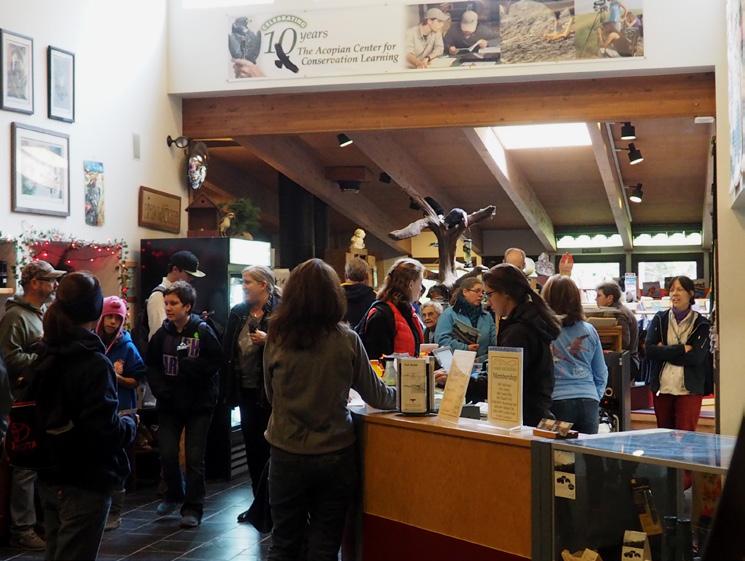


The nearly 50-year-old Visitor Center building has served us well, but today we face an aged roof, inefficient heating and cooling, lack of insulation and deteriorated siding and walls. In short, the infrastructure has outlasted its reasonable lifespan. Renovating and redesigning an existing structure is often more challenging than building a structure from scratch. But the newly designed Visitor Center will look and feel new and be a “green choice” by recycling what we can, while also serving to maintain a sense of familiarity within the new build.
The concept follows a two-year-long feasibility study and with guidance from a new strategic plan. Hawk Mountain Sanctuary is committed to addressing necessary upgrades at its Visitor Center, the headquarters for global raptor conservation. Generous donors from the Stratton Foundation heard our need and funded the feasibility study that has culminated in the drawings shown here today.
AUTUMN 2022 • HAWKMOUNTAIN.ORG 13
Current Visitors Center Entrance
Overcrowding that occurs inside the Visitors Center
Proposed rear of building
Tops Goals and Objectives
Education for All
Create an accessible and inclusive center that introduces people to the world of raptor conservation, science, and Appalachian ecology as a launching point to the Sanctuary preserve.


Tradition
Blend modern elements seamlessly with historic materials and native and/or locally sourced stone and wood.
Promote Science
Honor our history while sharing the latest in global raptor conservation science, training, and conservation.
Keep it Green
Model sustainable building practices that will improve efficiency, reduce impact, and offer education opportunities that inspire raptor conservation through education, science, and stewardship.
Highlights
• Eliminate the downstairs gallery to open the space and remove accessibility barriers
• Create a welcoming point to learn about raptors and their amazing migrations
• Improve visitor flow, relocating the store to one distinct area
• Demonstrate best practices in sustainable and energy efficient design
• Relocate some raptor enclosures to better connect people with live raptors
• Provide an open and more flexible space with more natural light
• Model the latest bird-friendly window techniques
• Recycle and repurpose much of the current footprint and structure
14 AUTUMN 2022 • HAWKMOUNTAIN.ORG
Powered by Passion
Hawk Mountain has inspired global raptor conservation by connecting people through science, education, and stewardship of our incredible Sanctuary located along the Kittatinny Ridge, a superhighway for migrating raptors and other wildlife that connects us with Central and South America. All raptor count sites were ultimately inspired by our founders’ shared passion, and that work continues to this day.

We continue to influence and mentor tomorrow’s conservation leaders here and around the globe and hope you are moved to make a donation in support of our new Visitor Center to continue the good fight… the fight for global raptor conservation.

AUTUMN 2022 • HAWKMOUNTAIN.ORG 15
Sean Grace, President grace@hawkmountain.org 610-756-6000 x213 Support this Work or Learn More Today
WFR RECERTIFICATION
COURSE
January 21 – 22 $250, $200 for Members
Already completed your WFR Certification and looking to renew? This 2-day course recertifies current SOLO Wilderness First Responders, refocusing on the fundamentals and running students through many scenarios.

All Wilderness First Responder students must have a current CPR card or will need to take a CPR/AED course on the first evening of the course for an additional fee of $40. You can select this option at registration.
WFR certification is valid for 3 years. On-site lodging is available upon request. Registration for both courses closes November 1. Learn more and register at hawkmountain.org/WFR.
WILDERNESS FIRST RESPONDER COURSE
January 7 – 14 $650, $600 for Members
SOLO's Wilderness First Responder (WFR) Course is the recognized industry standard and the perfect opportunity for anyone working in a position of outdoor leadership or who wants a high level of wilderness medical training. This 8-day course is a comprehensive and in-depth look at the standards and skills dealing with Response and Assessment, Musculoskeletal Injuries, Environmental Emergencies and Survival Skills, Soft Tissue Injuries, Medical Emergencies, and CPR.
POPULAR PROGRAMMING
WEE ONES WALK
Bring your wee ones to the Mountain for a fun morning learning about and experience nature. This program includes a story read-along followed by a hands-on activity, craft, and brief outdoor walk.
Sept 7
Oct
Nov
Dec
Very Quiet Cricket
Hoot Hike
Winter Critters
HOMESCHOOL HAPPENINGS
Homeschooled students are invited to a morning of experiential learning about the Appalachian Forest ecosystem with hands-on activities both inside and outdoors.
Sept 21
Oct
Nov
Dec
Invertebrates
16 AUTUMN 2022 • HAWKMOUNTAIN.ORG SCHOOL IN THE CLOUDS
– The
5 –
2 – Lovely Leaves
7 –
– Incredible
19 – Falcon Fest
16 – Biomimicry
14 – Veterinary Science
ADDING AVIAN AMBASSADORS
Over the last couple of years, Hawk Mountain has slowly introduced several new education birds to our avian ambassador line-up. You may have already met one of these raptors at a Sanctuary event, and visitors can see them at Raptors Up Close, an ongoing and FREE weekend program throughout the fall, or various other upcoming events.

AMERICAN KESTREL
Arrived Summer 2021
Sex: Male
Habitat: Grassland Specialist
Diet: Insects, small mammals and/or songbirds
Fun Fact: The American kestrel is the smallest falcon in North America.
BARN OWL
Arrived Autumn 2020
Sex: Male
Habitat: Grassland Specialist Diet: Rodents, small mammals, insects
Fun Fact: Barn owls can be found on every continent except Antarctica.

BLACK VULTURE

Arrived Winter 2022
Sex: Male
Habitat: Generalists, but prefer flat lowlands
Diet: Carrion, animal carcasses of all sizes
Fun Fact: Black vultures have no voice box, so instead of singing they make hissing and
All of these species are directly beneficial to humans! Kestrels and barn owls are farmland raptors, meaning they help farmers naturally control pests and rodents without chemical treatments. Vultures are considered “nature’s clean-up crew,” helping to reduce spread of bacteria and disease by consuming decaying animal matter.
AUTUMN 2022 • HAWKMOUNTAIN.ORG 17
SHANE ALSTON
Mohnton, PA
Shane is a senior at the University of WisconsinMadison majoring in animal science with a science emphasis. Originally from New York City, Shane moved to Pennsylvania a year ago. He has spent the last 5 years intensively studying mammals ranging from dogs and cats to cows and horses. Shane hopes to learn and help others learn more about all the raptors here at Hawk Mountain and beyond.

CATHERINE BOYLE
Mohrsville, Pennsylvania
Catherine is a 2020 graduate of Keystone College with a bachelor’s degree in wildlife biology and completed a hybrid traineeship in both conservation science and education. Her experience includes positions as a fieldwork assistant for the Operation Ruby-throat Study Abroad Program in Costa Rica, where she collected banding data on ruby-throated hummingbirds and other North American migratory birds. Catherine also has volunteered at the Red Creek Wildlife Center and served as an environmental educator at the Philadelphia Zoo. After her traineeship, Catherine would like to earn her master’s degree, build and put to use her skills in public education, and continue to work with wildlife.

JEANINE PAMELA CARVAJAL MASIS
Costa Rica
Pamela earned a bachelor’s in tropical biology and in autumn 2021, she joined the team of hawk counters at the Kekoldi Hawkwatch in Costa Rica, an experience that connected her to Hawk Mountain. Pamela intends to use her training at the Sanctuary to launch an environmental education and outreach program at Kekoldi: “A solid education program at the count site will ensure it is not only a monitoring project, but also an opportunity to connect with the local community.”

DEREK LEDERER
Old Forge, PA
Derek graduated from East Stroudsburg University with a bachelor’s degree in outdoor recreation focusing in environmental education. His career interests include studying wildlife topics such as ornithology and teaching the importance of conservation education. Derek’s goal is to help individuals develop a deeper understanding of environmental issues and have the skills to make informed and responsible decisions.

18 AUTUMN 2022 • HAWKMOUNTAIN.ORG SPRING AND SUMMER 2022 EDUCATION TRAINEES
CAROLINE FEGLEY
New Ringgold, PA
Caroline is a 2020 Elizabethtown College graduate with a bachelor's in environmental education. In 2021, she received an introduction to raptor research as a Hawk Mountain conservation science trainee and continued in the field as a fulltime hawk counter at Tussey Mountain and Bald Eagle Mountain hawkwatches in the fall. Since then, she has spent many hours volunteering at Hawk Mountain and practicing wildlife art.

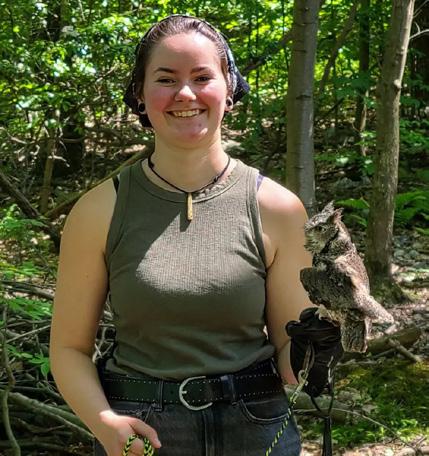

SOPHIE VAZQUEZ
Boone, NC
Sophie is a recent honors biology graduate from Appalachian State University. She has assisted with research, monitoring, and management projects to study and benefit a variety of passerines, raptors, bats, and salamanders. As an undergraduate, she was a technician and field, crew, and dataset manager for Appalachian State’s songbird monitoring initiative. She participated in the National Science Foundation’s REU program at the Raptor Research Center at Boise State University. She currently works at the Clifton Institute as the capture technician for the Smithsonian Conservation Biology Institute’s American Kestrel GPS tracking project.
CAYDEN REX
Kutztown, PA
Cayden is a senior at Kutztown University of Pennsylvania where she is earning a bachelor’s degree in organismal biology and ecology and is a member of the Ornithology Club and the Honors program. She is pursuing certification to be an IUCN Red List Assessor for a project that involves creating Red List assessments for threatened sub-tropical weevils. Cayden is interested in the intersection of science and advocacy as it applies to education, taking various field experience courses teaching in classrooms and working as an AmeriCorps Jumpstart volunteer in 2019, where she was an instructional assistant. She plans to continue working in conservation biology and teach at university in the future.
TAMARA RUSSO
Argentina
Tamara is now a Mexican resident working at the River of Raptor watchsite in Veracruz. She studied art history at Buenos Aires University but learned environmental education and became captivated by birds. She has since spent the past seven years teaching the challenges posed to biodiversity. In 2019, she joined the team at Veracruz and connected with Hawk Mountain. She intends to learn new outreach strategies and return to protect migratory raptors through education, social media, birding, and sharing experiences and knowledge with the other trainees and teachers from different cultures.

AUTUMN 2022 • HAWKMOUNTAIN.ORG 19



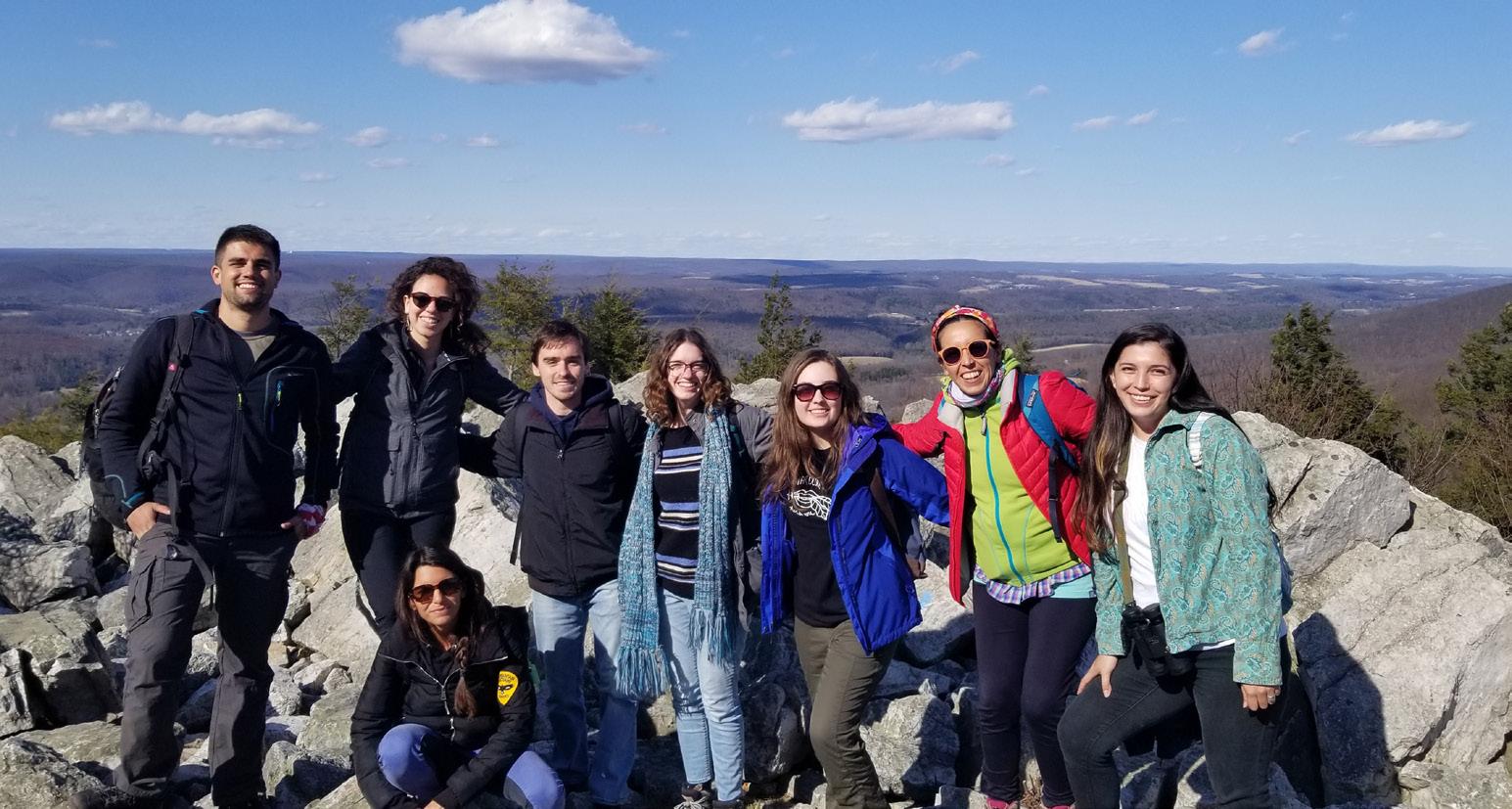












Shop stickers like these in our Mountain Bookstore or online at store.hawkmountain.org. In Color Birding Club
Berks Sinfonietta
Packbasket Workshop
Director of Education Jamie Dawson at the Benefit for Birds
Spring 2022 Trainees


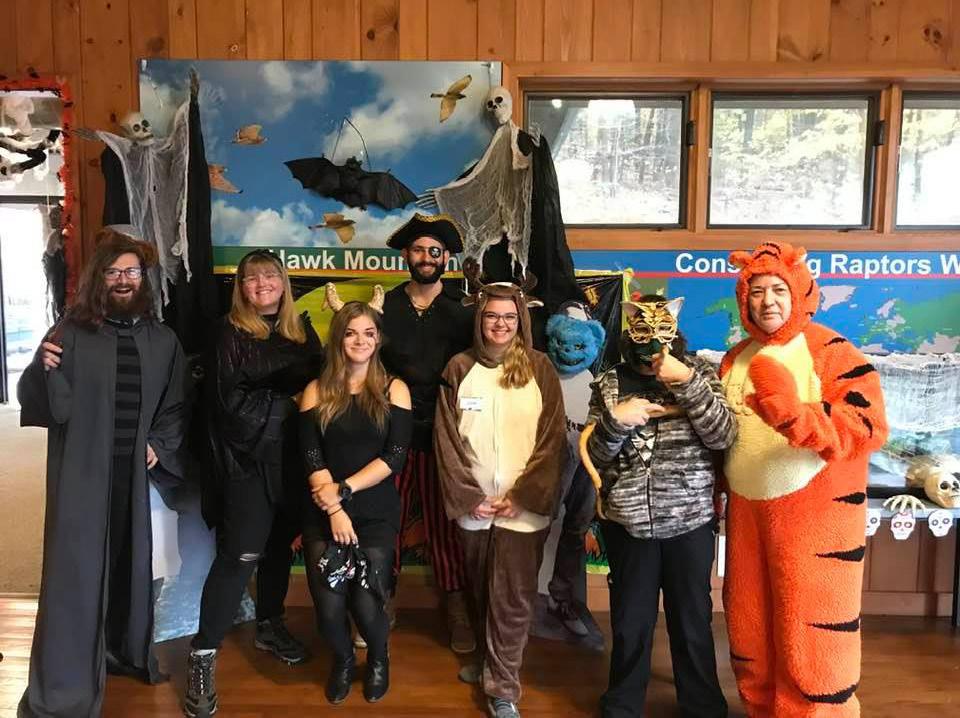




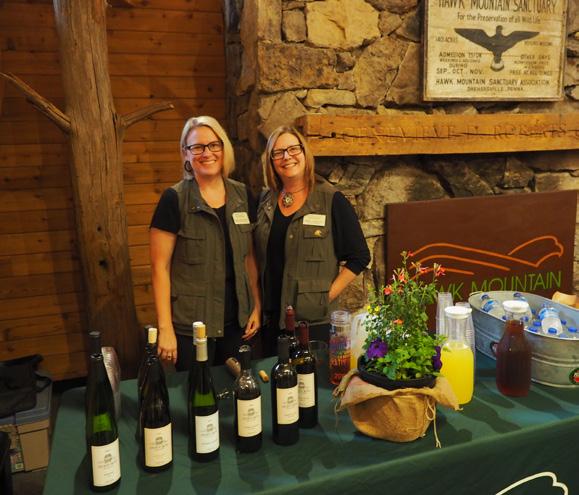









Trainees and Staff
Staff at Leadership Event
Kutztown Outdoor Recreation Club
Staff and Volunteers at Owloween Summer Day Campers
Rosalie Edge Society Members at kestrel banding
THE MYSTERY OF
The Weeping Eagle:
The Endangered Chaco Eagle Faces an Uncertain Future

It was a cold winter afternoon in central Argentina, more than 20 years ago.
A dreadful encounter drew José Sarasola’s attention. A juvenile eagle of an unknown species was hanging, dead, on a wire fence of a private ranch. The carcass had been left on purpose, probably warning other members of its species about their fate. Farmers in the area had the traditional belief that the “weeping eagle,” colloquially named due to the sound of its call, preyed on livestock. Its vocalization, resembling a long moan echoing through the forests of central Argentina, was a bad omen for those whose livelihoods depended on livestock. José immediately realized that there were no studies available on this rare animal, other than incidental observations and anecdotal records. The mystery surrounding this species had consigned it to heart wrenching scenes like the one he had just observed. He knew something needed to be done to change that. José went on to dedicate his life to studying this species, which he eventually determined to be the Chaco eagle.

Meanwhile, in a country on the other side of the world, an 8-year-old was asked a cliché question by his elementary school teacher. “So, what do you want to be when you grow up?”
“A biologist,” I replied. And that was all. At a young age, I had already solved one of the most burdensome puzzles of my existence–my vocation.
I am from Bilbao, a prosperous city in the Basque Country of northern Spain. I grew up surrounded by mountains, rivers, and sea. My father, who is also my best friend, taught me to love nature and treasure the environment. I was very curious, always willing to know more about any living being on earth.
Early in my career, I worked on several projects related to wildlife research and conservation, primarily in Spain and Portugal. However, the true passion for my vocation had yet to arrive. The opportunity came six years ago, when I embarked on a new life in La Pampa, Argentina. It was a research assistant position at the Center for the Study and Conservation of Birds of Prey in Argentina (CECARA), a group of scientists that investigate, protect,
22 AUTUMN 2021 • HAWKMOUNTAIN.ORG IN FLIGHT
By Diego Gallego García. Ph.D. student at the Center for the Study and Conservation of Birds of Prey in Argentina (CECARA) and Argentinian Scientific and Technical Research Council (CONICET). 2022 Spring Conservation Science Trainee at Hawk Mountain Sanctuary.
Juvenile Chaco eagle found dead by persecution in La Pampa province, central Argentina. By José Sarasola
and conserve raptors and their habitats. In the vast and forgotten arid areas of Argentina, where conditions are extreme and few people dare to live, I became fascinated by the Chaco eagle (Buteogallus coronatus). Severely threatened by human activity, its population is languishing in an unprecedented era of anthropogenic destruction. Instantly, I decided that I would devote my life’s work to this species.
José Sarasola, the man who dedicated his own life to saving this species, offered me a Ph.D. position studying the movement ecology of Chaco eagles. I instantly accepted. My Ph.D. thesis consists of examining Chaco eagle dispersal movements and habitat from the time they achieve independence from their parents to their reproductive maturation. This period is called juvenile dispersal, and it is critical for the survival and breeding performance of every individual.

However, I cannot continue this dissertation without acknowledging the work of other people before me who also made huge efforts to save this species. Indeed, more than 20 years of research, outreach, and conservation of the Chaco eagle has propelled us from lack of awareness into action. The Chaco eagle is one of the rarest, most elusive, and severely threatened birds of prey in the Neotropical region. It is also one of the largest in all of southern South America. Adults have gray to ashcolored plumage with a dark gray tail and a wingspan reaching up to six feet, and they stand two and half feet tall and weigh nearly ten pounds. One of its field marks is a conspicuous crested head.
The species inhabits savannah-like ecosystems, open woodlands, and dry shrublands, from southern Brazil, Bolivia, and Paraguay to central Argentina. It takes five years for the species to mature to breeding age, and it lays only one egg per nesting season. With a global population estimated to be less than 1,000 reproductive individuals and declining trends, it is listed as Endangered by the International Union for the Conservation
of Nature (IUCN). The species became extinct in Uruguay in the 1930s.
The primary threats to Chaco eagle populations are human-related. The original range of Chaco eagle distribution has suffered a regression of almost 40% due to the transformation of native forests into croplands. More than 100 incidents of illegal killing by locals have been reported across Argentina during the last 20 years, most of which are associated with human-eagle conflict.
Contrary to the belief of local farmers that the species feeds on livestock, the Chaco eagle diet mainly consists of armadillos and reptiles such as tegus, pit vipers, and coral snakes. Other important causes of mortality include human infrastructures: eagles get electrocuted in power line poles where they perch while searching for food. A combination of their big wingspan, the short distance between the cables, and the conductive material of the pole makes these structures risky for this species. Additionally, open-pit water reservoirs, commonly used by farmers in arid areas to provide livestock with this scarce resource, are lethal traps for wildlife. If an eagle accidentally falls into the water, it will not be able to escape, dying from drowning or exhaustion.
AUTUMN 2021 • HAWKMOUNTAIN.ORG 23
Dr. José Sarasola taking out a dead Chaco eagle fledgling that drowned in a water reservoir.
Sadly, it is not easy for Chaco eagle populations to recover from these threats. Along with their low productivity rate, we know that more than half of their nests fail. After leaving the protection of their parents, only 30% of the juveniles survive to adulthood. With all this in mind, models predict probable extinction of Chaco eagles in the next 50 years. The disappearance of this apex predator could eventually result in an uncontrolled increase in the populations of its preferred prey species, such as armadillos and venomous vipers, with unknown consequences for other wildlife and the ecosystem.

Twenty years ago, little was known about Chaco eagles. Thanks to a few long-term studies, particularly in central Argentina, new scientific information about its ecology has emerged, providing some insight into the threats affecting their population. Milestones include a change in people’s perception towards Chaco eagles and a subsequent decrease in the illegal killing in La Pampa province. Our research is an extension of this progress.
Before the beginning of every breeding season, we give talks at schools, hold interviews with local people, and meet rural workers at farms and ranches to raise awareness for the protection of the Chaco eagle. Outreach is one of the best experiences of our job. New generations embody the fate of the nature we work so hard to preserve. I can tell by the innocence in the children’s faces that they have not yet realized the burden and volume of
environmental stewardship we are leaving to them. We have a responsibility to give them the tools, through education, to save what we probably will not in our lifetimes.
Like chameleons, we delve into the rich culture of rural Argentina, adapting to their environment. We blend in with the gauchos, farmers living alone in these areas. We try to understand their difficult situations while we admire their unique wisdom.

During endless nights by a fire, with the company of their inseparable mate (a typical Argentinian drink), stories coming from the land beat our hearts while our minds ramble across the landscape of a world we have assimilated.
They are sharing their ancestral knowledge in these stories, the ones that we, as scientists, are unable to explain. Instead we let them build our humanity, and that, in the end, gives us the most useful information to search for these secretive eagles.
24 AUTUMN 2022 • HAWKMOUNTAIN.ORG
The magical moment when the researcher encounters the fledgling at its nest. By José Sarasola
IN FLIGHT
After, we explore vast areas of central and northern Argentina, visiting previous Chaco eagle territories and making the most of the data collected during the outreach campaign. Our adventurous journeys usually bring us to some of the most remote places we could ever imagine. With temperatures reaching 45º C (115º F) in summer and no cellphone coverage in many places, these arid areas require the most unbreakable will to be traversed. However, the discovery is worth the effort when we find something more valuable than gold—an active Chaco eagle nest. When we see the male and female leaving to bring sticks to the nest, we know it is the perfect time to set up a camera trap so that we do not disturb the family during their crucial breeding season. These devices are witnesses to the best kept secrets of this eagle, giving us vital information on parental care, diet, and eventually, causes of nest failure. If we are lucky enough, at the end of the reproductive season, we get to tag Chaco eagle fledglings with GPS-satellite transmitters. The locations obtained by these devices give us more insights to the habitat that Chaco eagles use and the threats they face. Eventually, some juveniles make it to adulthood and give us key information—the location of their nest!
However, our work does not end with the breeding season. After the eaglets fledge from the nest, the real conservation action starts. We try to find the best solutions to benefit both humans and Chaco eagles. For instance, we install rescue ramps at water reservoirs, giving them an opportunity to safely drink water without falling into the tank. These rescue ramps also help ranchers maintain water quality by reducing animal drownings by more than 50%, resulting in reduced water contamination. We also give advice to energy companies on correctly retrofitting power poles, thus avoiding hundreds of electrocution events that sometimes leave entire villages and towns without light.
The Chaco eagle is a flagship conservation species for the ecosystems in which it

lives and for our lifetime. Little by little, we are building a network of enthusiasts committed to Chaco eagle conservation, including landowners, ornithologists, land management technicians, and other professionals. However, time flies for “the weeping eagle,” whose characteristic sobbing call is becoming less and less common in the open woodlands of Argentina. It is our task to stop the clock. Would you join us?
For more information on the project, visit the Instagram account @proyectoaguilachaco, or visit the CECARA page on Facebook at facebook.com/cecaraunlpam. You can also find more information about our group at cecara.com.ar
If you or someone you know may be interested in funding this study, please visit our GoFundMe campaign at gofundme.com/f/chaco-eagle-needshelp-to-avoid-extinction, or contact Diego Gallego (diego.gallego@cecara. com.ar) or Dr. José Hernán Sarasola (jhsarasola@hotmail.com).
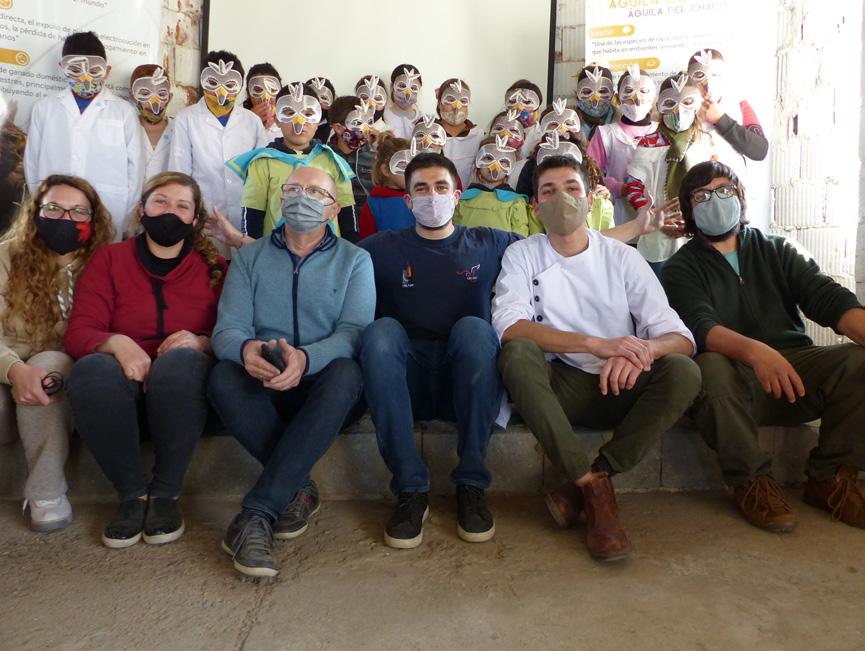
AUTUMN 2022 • HAWKMOUNTAIN.ORG 25
School activity organized by the Chaco Eagle Project team in Santa Fe province, northern Argentina. By Diego Gallego
2022 Spring Migration Summary
By David Barber, Senior Research Biologist
Early season spring counts are often dominated by turkey vultures, and this year did not deviate from that pattern; a season high 24 turkey vultures were counted on March 21. A turkey vulture was also the first migrant of the official count, soaring north over the lookout at 9:38 am on April 1. Overall, counters tallied 1,105 migrating raptors of 13 species in 260 hours over 43 days from March 22 to May 15.
A season high eight red-tailed hawks were counted on April 8 along with 10 turkey vultures, 3 ospreys, a bald eagle, 2 sharpshinned hawks, and an American kestrel. The first broad-winged hawk of the season was seen soaring over the lookout on April 9. A late day surge of broad-winged hawks on April 16 produced the first big flight of the season, with 167 broadwings counted between 2 and 4 pm.
Migration slowed during the third week of April, but light WNW winds on April 22 produced the best accipiter flight of the spring, with season highs of 12 sharpshinned hawks and 3 Cooper’s hawks. The overall count peaked on April 24 with 366 raptors tallied, including 12 black vultures, 3 ospreys, 4 bald eagles, 6 sharpshinned hawks, 336 broad-winged hawks, a red-tailed hawk, and an American kestrel. Flights continued into late April and early May, although in lower numbers. The season came to an end on May 15 with two broad-winged hawks soaring over the lookout and streaming north late in the day.
Overall, the count total was 17% above the 10-year average. Both turkey vultures and broad-winged hawks had above average counts, and the broadwing total of 680 was the second highest spring
WE THANK THIS SEASON’S
Science Trainees:
Bowers, Catherine Boyle, Diego Gallego
Runkle, Paula Orozco Valor, Marzia Verduci | Education Trainees: Pamela Carvajal, Tamara Russo
Staff: David Barber, Bracken Brown, Laurie Goodrich, Rebecca McCabe, Jean-Franҫois Therrien | Volunteers: Caroline Fegley, Rob Feldman, Jon Levin, Scott Morrison, Matt Wlasniewski
hawk (38%),
trends were seen at
harrier, Cooper’s hawk,
hawk were below average,
hawk tallies
NORTH
Species
Black Vulture Turkey Vulture Osprey
Bald Eagle Northern Harrier Sharp-shinned Hawk Cooper’s Hawk
Northern Goshawk Unidentified Accipiter Red-shouldered Hawk Broad-winged Hawk Red-tailed Hawk Rough-legged Hawk Unidentified Buteo Golden Eagle
Unidentified Eagle American Kestrel Merlin
Peregrine Falcon Unidentified Falcon Unidentified Raptor TOTAL
26 AUTUMN 2022 • HAWKMOUNTAIN.ORG SPRING REPORT
LOOKOUT – SPRING 2022 Raptor Migration Count March 21 to May 15
RAPTORS Season 22 102 47 40 6 72 12 0 7 4 680 55 0 19 0 0 12 4 3 7 13 1105 Peak 1-Day 12 24 6 4 1 12 5 0 2 1 336 8 0 3 0 0 4 1 1 2 2 366 10 yr Avg 28 55 64 42 21 79 35 <1 14 8 429 81 <1 30 2 1 24 6 3 4 26 948 count at Hawk Mountain. Several species had counts well below their 10-year average, including osprey (26% below average), northern harrier (71%), Cooper’s
and red-tailed hawk (32%). The counts of northern harrier and Cooper’s hawk were the lowest spring counts recorded at Hawk Mountain. Similar
other watchsites in Pennsylvania; counts of osprey, northern
and red-tailed
and broad-winged
were above average at most sites.
COUNTERS: Conservation
Matthew
Garcia, Julia
|
By Rebekah Smith, Science-Education
Outreach Coordinator
Nymphalis Antiopa,
It was a cool and wet spring in eastern Pennsylvania, which ushered a slow beginning of summer on the Mountain. Despite the prolonged cooler temperatures, many animals still emerged early.
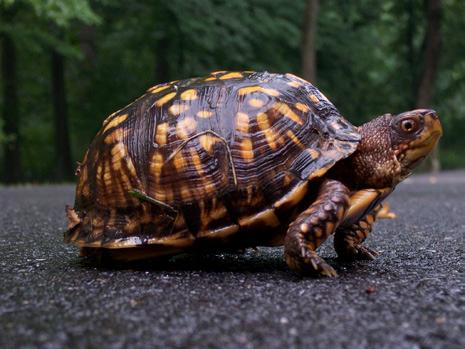




Salamanders were spotted earlier than normal this year, with the first spotted salamander of the year being seen on February 10 in the Visitor Center parking lot. Some butterfly species emerged earlier this year, such as the eastern tiger swallowtail, whose peak flights were in June. Mourning cloak and Juvenal’s duskywing butterflies were seen out on Owl’s Head in the early summer as well. Other pleasant invertebrate finds included a lemon plagodis moth, a luna moth, and lightening bugs.
Breeding bird surveyor David Barber was delighted to discover counter-singing cerulean warblers on the Sanctuary. At least 8 worm-eating warbler territories were also observed. A bluegray gnatcatcher with its fledgling and ovenbirds feeding their young were seen. A rowdier bunch, common ravens with fledglings, helped to make a ruckus behind the Visitor Center and at Owl’s Head. Nesting raptors were noted on the mountain, including black vultures, broadwinged hawks, and red-tailed hawks.
Many baby mammals were also spotted on the mountain this year. A pair of white-tailed deer fawns visited staff behind the Visitor Center; curiosity had gotten the best of them as they brazenly approached educator Aaron Prince. A gray fox with kits was seen up on Owl’s Head, and a black bear sow with two cubs were noticed on the River of Rocks. Reptiles were just as busy, proven by the female box turtle that was spotted getting ready to dig a nest behind Owl’s Head.
A cool, wet spring bode well for the pink lady slippers, which became an abundant orchid along the slopes of the mountain. The mountain laurel and deerberry bloomed particularly lovely this year. White pine pollen was thick in the air during June. Rhododendrons bloomed in early July for a short time. Ferns emerged, as crisp as ever, but were eager for rain as the summer started to dry out. By mid-July, flora and fauna of the northeast were eagerly awaiting a summer storm season.
AUTUMN 2022 • HAWKMOUNTAIN.ORG 27 FROM THE NATURE NOTES
Mourning Cloak
Photo by Bill Moses
Turkey Vulture,Photo by Bill Moses
Ovenbird, Photo by Bill Moses
Box Turtle,Photo by Ron Alford
SPRING & SUMMER
2022 Conservation Science Trainees
MATTHEW BOWERS
Kenhorst, Pennsylvania
Matthew is a 2021 graduate of Pennsylvania State University with a bachelor’s in wildlife and fisheries science who also recently completed a certificate program with the Penn State World Campus in earth sustainability. Matt has been an American kestrel research technician under the direction of Sanctuary collaborator Dr. Allison Cornell and Hawk Mountain Senior Scientist Dr. JF Therrien. Matt has also worked as a technician with the Penn State Deer Research Center. After completing the spring traineeship, Matt assisted with American kestrel summer fieldwork. After his traineeship, Matthew would like to pursue wildlife research and outreach while working on a degree at Western Kentucky University.
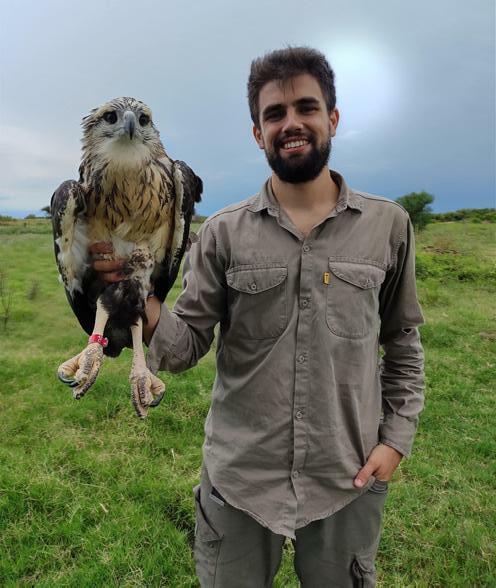

DIEGO GALLEGO GARCÍA
Bilbao, Spain
Diego is a biologist currently pursuing his doctorate at the National University of Comahue in Argentina. The focus of his research is the movement ecology of the endangered Chaco eagle in central Argentina. He received his master’s from the Complutense University of Madrid and his bachelor’s at the University of the Basque County, Spain. During his traineeship, Deigo pursued funding for his ongoing research, and once he departs, he will complete his degree and continue to focus on the movement ecology and conservation ecology of raptors.
JULIA RUNKLE
Lancaster, Pennsylvania
Julia received her bachelor’s degree in environmental studies with a focus on conservation biology in 2021 from Bryn Mawr College, PA, and she interned at the Philadelphia Zoo where she engaged the public about the conservation measures the zoo takes to protect its collection. Julia also participated in an animal care internship at the Philadelphia Zoo, gaining experience in exotic animal handling. After her traineeship, Julia would like to pursue a master’s degree in wildlife biology and a career in field research focused on wildlife conservation and climate change.

28 AUTUMN 2022 • HAWKMOUNTAIN.ORG ON THE WING











Spring 2022 Trainees
Diego & Matthew
PAUL HEVERAN
Pennsburg, Pennsylvania | Summer Field Experience Intern

Paul is a student at DeSales University majoring in biology. He has been a young counter at Hawk Mountain for five years and has been a volunteer assisting Sanctuary biologists with American kestrel research for three years. After Paul’s traineeship, he plans to finish his undergraduate degree and then pursue a master’s degree specializing in bird migration, pertaining to nocturnal and early morning movements. Paul is 2020 and 2021 Summer Trainee alumni and assisted Sanctuary scientists this summer with American Kestrel research.

PAULA OROZCO VALOR
La Pampa, Argentina
Paula received her doctorate from the National University of Comahue in Argentina in 2019 and her bachelor’s from the National University of La Pampa in 2014. Paula’s Ph.D. research focused on monitoring populations and health of American kestrels in agroecosystems of La Pampa. She has participated in several raptor research projects and published results. After Paula’s traineeship, she plans to continue to study the American kestrel, or as they call it in Argentina, “Halconcito Colorado.” As an early-career researcher, Paula hopes her traineeship will advance her professional goals and continued work to study and conserve raptors.


MARZIA VERDUCI
Villa San Giovanni, Italy
Marzia earned her master’s in biodiversity and natural systems and a bachelor’s in natural science, both from the University of Calabria, Italy. While completing her studies, she participated in an internship that focused on the analysis and characterization of microplastics from Calabrian marine sites by observation stereomicroscope and chemical-molecular analysis by infrared spectroscopy fourier transform. She also monitored birds of prey in proximity of power lines and sought out birds injured by electrical cables in Sicily. After her traineeship, Marzia would like to work in the field of conservation and focus on the protection of ecosystems and the species associated with them.
30 AUTUMN 2022 • HAWKMOUNTAIN.ORG ON THE WING
CHRISTINE LAMBERT
Alburtis, Pennsylvania | Summer Field Experience Intern
Christine is a student at Delaware Valley University where she is majoring in conservation and wildlife management. Christine was a Wildlife Management Intern for the Pennsylvania Game Commission, where she assisted region biologists with trapping and banding several game and non-game birds, assisted in trapping and marking of black bears, monitored bald eagle and osprey nests, along with great-blue heron rookeries. Christine was also a volunteer at the Last Chance Ranch, where she assisted veterinarians with surgeries, hoof trimming, tooth pulling, stitches, vaccinations, and physical therapy. Christine’s future plans are to gain more experience as a Wildlife Bio-Aide or Technician around the country. Her goal is to widen her perspective and experience with various wildlife so she may pursue a master’s degree. This summer Christine assisted Sanctuary scientists with American kestrel and broad-winged hawk research.

GRACE MUENCH
Pottsville, Pennsylvania | Summer Field Experience Intern
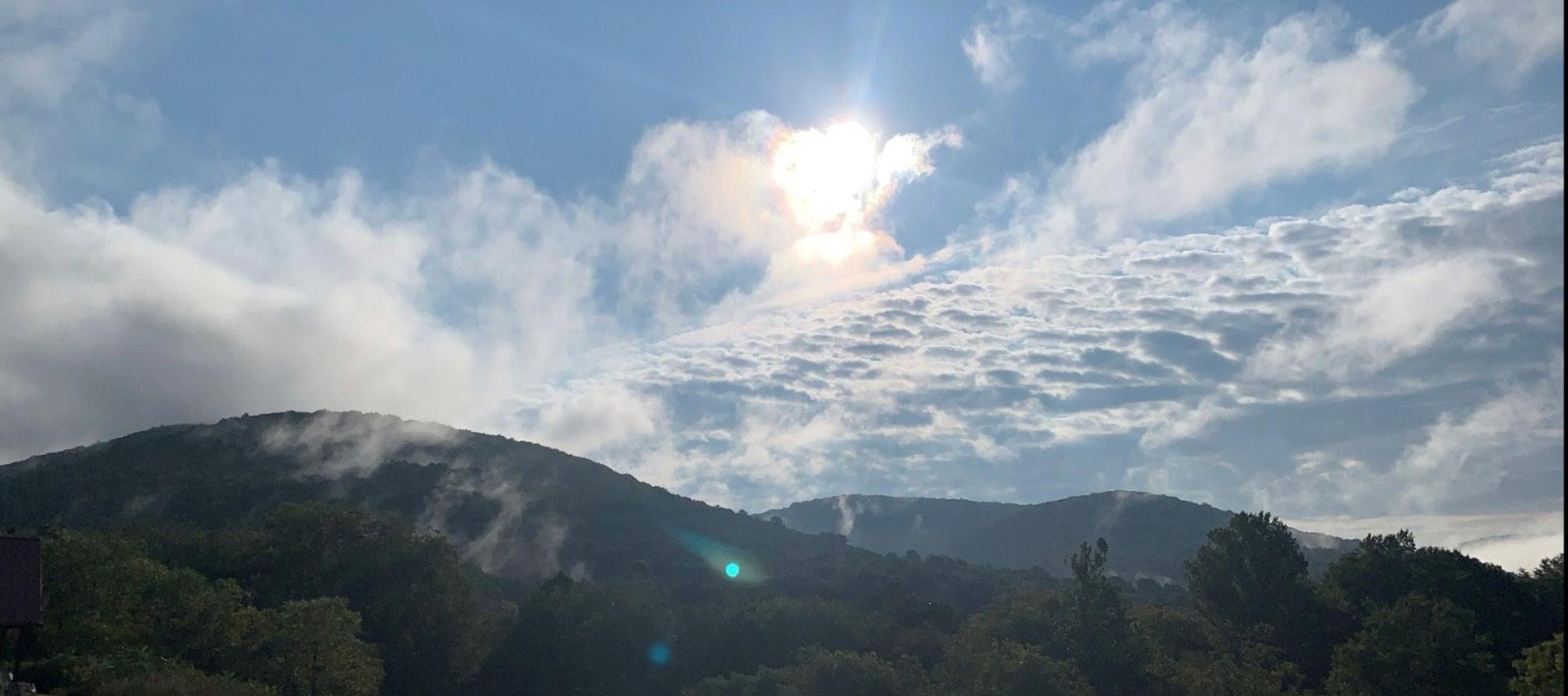
Grace is a student at Pennsylvania State University, Schuylkill, where she is pursuing a bachelor's degree in in biology with a general ecology option. Grace has been a field assistant for Pennsylvania State University, Schuylkill, for the last two years where she has been capturing birds using mist nets, searching for target nests, and monitoring nests, along with banding adult and nestling gray catbirds. Grace is also a biology research assistant, where she is reviewing literature relevant to host-seeking behavior in mosquitos to compile data for a project on mosquito host preferences. Grace’s future plans are to complete her bachelor’s degree and attend graduate school where she will focus in ecology and study population ecology of songbirds. Grace assisted the broad-winged hawk research along with many other research projects this summer.

AUTUMN 2022 • HAWKMOUNTAIN.ORG 31
My Unexpected Path:
Art as a Key to Conservation Education from Buenos Aires to Veracruz River of Raptors
 By Tamara Russo, Spring 2022 Conservation Trainee
By Tamara Russo, Spring 2022 Conservation Trainee
My name is Tamara Russo, and I’m from Argentina, but nowadays, I live in México. Birds became a part of my life 7 years ago. They weren’t in my original plans, but they arrived in my life in an unpredictable and surprising way.
I grew up in Buenos Aires, a big city, where it was difficult for me to adapt to different types of pollution and the grey pavement is the most abundant color. I discovered my safe world inside art, and that is why I chose to study art history. In the art world, I discovered the kind of beauty that was difficult for me to find in the big city. One of my favorite types of art is painting. I love murals because they are accessible to more people and they can transform a space or even a street, sharing beauty, colors, and inspiring messages.
I found that I love to travel and discover new places, cultures, and ecosystems. That’s how I started to volunteer in rescue centers for wildlife. This passion was born in Bolivia, where I met a beautiful family in the Amazon who were helping injured and lost
animals. I also got the chance to work as a guide for a center for butterfly research in Peru. Almost without realizing it, my course started to change. I discovered the most beautiful and delicate pieces of art in nature!
During my journey through South America, I was traveling in Colombia with a friend when we decided to visit an island called Baru, in Cartagena. While I was exploring the island, walking along those tropical streets, I saw the National Bird Park. I was guided by the screams of macaws to this impressively huge aviary. I still hold the first impression that I got from this park in my heart, because this experience changed my life’s path. I returned to the park several times to offer my time as a volunteer. I was very determined in this mission, when the directors finally gave me the chance to stay and learn about birds. So, my tropical vacation became what I will always consider my first feathery adventure.
The National Bird Park is home to more than 2000 birds. Colombia has the biggest diversity of birds in the world, so this
32 AUTUMN 2022 • HAWKMOUNTAIN.ORG UP & COMING CONSERVATIONIST
Aviary has special conservation projects to protect endangered species like the harpy eagle (Harpia harpyja), Andean condor (Vultur gryphus), and Colombian paujil (Crax alberti). Through these projects I learned the meaning of conservation, and it became my strongest aspiration. I met more birds than people there, but I also met the first person that taught me about birds, Paola Buitrago, who has become a close friend and long-term mentor. I learned from this experience that the passion and the wisdom of some people can have a ripple effect on others.

I started to assist the veterinarians and learn as much as I could about this new world of birds. I was fascinated by their behaviors, their colors, their songs, and the diversity of this group of animals. I also had the opportunity to give environmental education programs to school groups from local communities, and my passion continued to grow. I began using the skills I learned from studying art history for teaching environmental education. The arts can work as a key to sharing the message of conservation. They can make the process of learning more fun, diverse, and easier to understand. From this experience, birds became part of my life. I started birding every place I visited, including Panamá, Guatemala, and México. They won my deepest admiration while I was searching for the most common to the strangest species.
In 2018, I became part of a sustainable community on the Peninsula of Yucatán, México. There I learned the importance of living in a harmonious way with our ecosystem. We grew our own food, we cared for native bees, did our own waste management, built with gentle materials, and used sustainable energy sources. We always gave our best efforts to make the least impact. I put all my abilities and passions into this community through cocreating a department of environmental education. This experience was amazing for me! As a part of the project, my coworker Dali and I organized a birding group for kids. We gathered a fabulous group, meeting two times a week to share our love for nature through birding.
Since arriving in Mexico, my heart races every time people mentioned the River of Raptors in Veracruz. I couldn’t get the worldrenowned migration site out of my mind. While birding, raptors are more elusive, so the idea of seeing thousands in the sky at the same time still blows my mind. I visited Veracruz once, and that was enough for me to know that I want to be part of it. Migration at Veracruz was the most impressive phenomenon I have ever seen. There aren't words to describe it. Veracruz counts the most migratory raptors in the world. Around five million raptors govern the sky during migration, and waterbirds and songbirds use this corridor, too.

AUTUMN 2022 • HAWKMOUNTAIN.ORG 33
Tamara leading environmental education efforts in a Mayan community in Yucatan
Throughout all these experiences, I fell in love with México. I was amazed by the cultural diversity and the megadiversity. I chose this country as a second home. With the same determination, I applied and was offered a position as an environmental educator for the fall season of 2019 at the River of Raptors. I met Yumei Cabrera, one of the pioneers of the Project, and assisted her in environmental education programs. I also assisted her in organizing the Festival of Raptors. The Festival of Raptors is a wonderful event where different artistic talents, environmental educators, and local cultures are all brought together to celebrate the raptors migrating. It was an amazing experience.

Yumei is a natural educator, with every kid or adult. Her kindness and passion seep through every time she speaks, making her a powerful and effective ambassador for raptors. From the first moment I arrived, she made me feel part of the community. I’m very grateful to her for all the generous knowledge she has shared with me. I keep all her advice with me. She helped me with my self-confidence, enough to follow this path of community integration into conservation. She is one of the great teachers of my life.
A whole season working in The River of Raptors is something you can't forget. I remember being surprised by the counter’s abilities, having sometimes three or four clickers in their hands to count every raptor. The counters and director, Kashmir Wolf, were always sharing techniques to identify the birds. Almost all the counters are people from the nearby communities who have grown up watching the migration. Naturalists, birders, and scientists – all of them have inspiring histories and huge amounts of knowledge about the birds. Every day during migration in Veracruz feels like a celebration.
I felt, and still feel, very close to these migrants of the sky because migration also has become part of my life. At the River of Raptors, I learned about the importance of
the migratory corridor for these beautiful birds and the importance of collaboration between projects. Birds can connect us, as a community of different countries, for the same reason – to understand the migrants and to conserve them. That’s how I discovered Hawk Mountain Sanctuary. It was in December of 2019 when Jamie, the Director of Education at Hawk Mountain Sanctuary, gave me the invitation to join the Spring 2020 class of trainees. I arrived at Hawk Mountain Sanctuary in March 2020 and for me, it was like a dream coming true. But in the same moment, something stopped the entire world. The pandemic was global, and with tears in our eyes, I and the other trainees had to leave the traineeship. I had to go back to México for everyone’s safety.
It was a hard, frustrating moment, but I knew the birds would keep migrating, so I couldn't give up. I persisted, and finally I arrived at Hawk Mountain Sanctuary to join the spring class of 2022.
During my traineeship at Hawk Mountain, I learned new perspectives to teach. I also gave environmental education programs in English to different types of public audiences. Teaching in English was challenging, but I now feel more confident with this language. Many times, I gave programs while handling live birds! My favorite way to learn is from people, so sharing time with all the Hawk Mountain staff and other trainees was super valuable to me. I did the spring counting at the
34 AUTUMN 2022 • HAWKMOUNTAIN.ORG UP & COMING CONSERVATIONIST
Tamara assisting Yumei with an education program in Veracruz.
North Lookout, a dream office! I was able to practice my identification skills, which I enjoyed so much. I also got the opportunity to join the science team for some interesting missions, like searching for broad-winged hawk nests in the deep forest, checking nest boxes for American kestrel nestlings, and setting camera traps. These experiences have made me feel so empowered, and my hope and passion for conservation is stronger. The history of Hawk Mountain has inspired me, especially when I learned of the efforts that began in 1934 and have continued since. I strongly believe that people sharing the same ideals can make significant changes in history.
Once back in México, I will be waiting for the feathered migrants of my heart in Veracruz. This time I will manage the observatory. It will be a new experience for me as I will be sharing everything about migration with all the visitors, in addition to helping identify the birds and assisting with everything that is needed at the observatory.
Through birding, art, and education I want to spread the importance of taking care of the migratory corridor for these amazing owners of the sky. I would like to continue growing this community of conservationists diversely and inclusively. We are again faced with a historical moment when nature, our common house, needs us all together to build strategies and spread knowledge to keep our world safe for all species, including us.

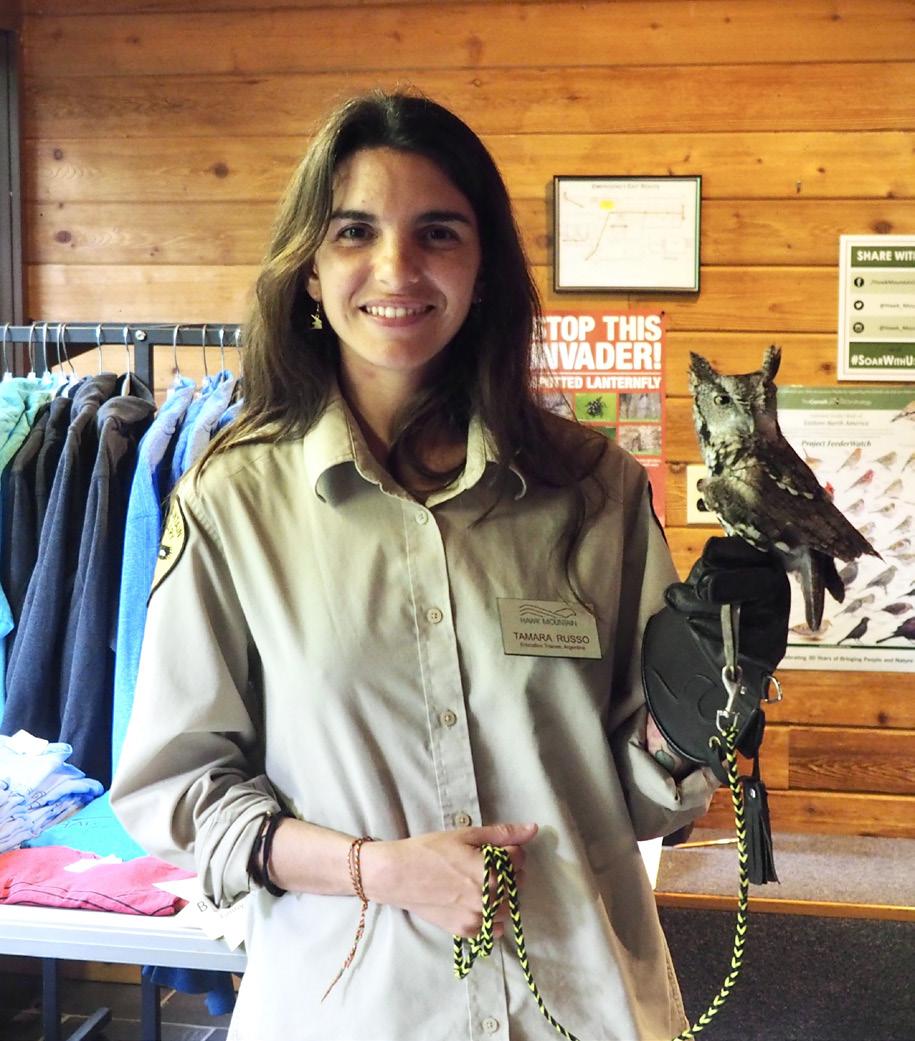
AUTUMN 2022 • HAWKMOUNTAIN.ORG 35
Tamara birding at Cape May, New Jersey with spring 2022 trainees.
“Nature needs us all together– the neighbors, the kids, the musicians, the scientists, the educators, the artists, the legislators, and the farmers. We can, and we are, doing it!”
2022 Autumn Lecture Series
All lectures are FREE to attend and take place at 5 PM in the ADA accessible Outdoor Amphitheater unless stated otherwise.
Hawk Mountain's Mission to Save the American Kestrel

Saturday, October 1
Learn how Hawk Mountain's new and collaborative research project aims to reveal why American kestrels are declining and uncover ways that we can help them.
Critical Insights into the Lives and Ecology of Scavenging Birds of Prey Saturday, October 22

Discover the lives and ecology of scavenging birds of prey, with a focus on old-world species, through the experiences of a Hawk Mountain legend.
Hawk Mountain Sanctuary Stewardship
Saturday, October 15
Learn about the trials, tribulations, and successes of managing the lands of the Sanctuary, including trail, forest, and habitat management.


Veracruz River of Raptors: Conservation Along the World’s Largest Raptor Migration Flyway

Saturday, November 5
* This lecture will take place in the Visitor Center Gallery.
Learn how the Mexican conservation organization Pronatura Veracruz joined forces with Hawk Mountain and HawkWatch International to conserve raptors along the spectacular Western Hemispheric flyway.
36 AUTUMN 2022 • HAWKMOUNTAIN.ORG HAWK MOUNTAIN HAPPENINGS
Members Day Sales
Friday, Sept 23 & Saturday, Oct 22
We wouldn't be here without you!
To show our appreciation, Mountain Members will receive 20% off most items in the Mountain Bookstore.
Hawkwatching with the President
Tuesday, Sept 20 & Wednesday, Oct 26
Join President Sean Grace on a guided walk to North Lookout to scan the skies for raptor migrants and learn about the importance of the annual hawk count. Registration required.
MEMBER EXCLUSIVES BIRDABILITY EVENTS
Promoting awareness of accessibility in the outdoors. Learn more at birdability.org!
Accessible Hawk Watch at South Lookout
Saturday, October 22
Join Hawk Mountain staff on our awardwinning ADA Accessible Silhouette Trail that leads up to our Scenic South Lookout, learn about raptor identification, and observe the 2022 fall migration. Registration required.
Native Habitat Garden Birding Challenge
Sunday, October 23
Help our naturalists identify as many species as possible from within the Native Plant Garden. This is stationary birding at its best! Stay as long or as little as you like.
Check out more accessible programs at hawkmountain.org/events
The World of Rhythm
Saturday, September 24
The natural and human world revolve in rhythm! Join us for an interactive exploration of rhythm featuring percussion and song. No musical experience needed. Registration required.
Meet the Fall Forest
Saturday, October 1
Join local ecologist Dr. Chris Sacchi for a casual walk and learn to identify common trees and fall flowering plants at Hawk Mountain as fall arrives. Registration required.
Changing Seasons on the Mountain
Saturday, October 8
Join Master Naturalist Gordon Bosler for a guided walk through the woods at Hawk Mountain to look for fall flowers, mushrooms, and other signs of the changing seasons. Registration required.
Autumn Moonlit Hike
Sunday, October 9
Join us for a two-mile hike in the light of the full moon to North Lookout and meet a LIVE nocturnal raptor. Registration required.
Wild Women on the Mountain: Overnight Camping Experience
Saturday, Oct 15 – Sunday, Oct 16
During this overnight adventure, learn the basics of tent camping, outdoor cooking, and leave-no-trace principles in a welcoming atmosphere, concluding with a guided morning hike. Registration required.
Owloween
Saturday, October 29
Celebrate on the Mountain with creepy, crawly, cold-blooded creatures! Learn all about owls and get to meet one up close. Enter our Costume Contest and take home creepy crafts, treats, and more. Registration required.
Autumn Open House
Saturday, November 19
With one month to go counting migrating raptors on North Lookout, a celebration will take place in the Visitor Center Bookstore. Special programs, merch discounts, live bird presentations, and more!
Lenape Lifeways
Saturday, November 19
Be introduced to the First People of Pennsylvania, New Jersey, and Delaware. This program explores the life and times of these peaceful, progressive people. Handson, interactive exhibits available all day.
AUTUMN 2022 • HAWKMOUNTAIN.ORG 37 2022 UPCOMING EVENTS
LEAVE A LEGACY
Rob and Kareen Canora
A chance meeting between Los Angeles banker Kareen and a New York financier Rob sparked a lifetime of love when Rob travelled to the West Coast on a random business trip. Turns out the two worked for the same French banking company and have been an outdoor-loving duo ever since. Upbeat, outgoing, and ready for rugged adventure, Rob and Kareen now travel to enjoy family in Europe as well as cultural and natural experiences near and far.
Their global view connects with Hawk Mountain’s far-reaching conservation mission, and they are passionate supporters who recently made the caring decision to make an extraordinary legacy gift that qualifies them as members of the Rosalie Edge Society.

“I was always enamored with birds—a passion I got from my mom—and that remains true to this day, especially with raptors,” Rob explains. His passion made Kareen a quick birding convert and it wasn’t long before they visited Hawk Mountain.
“My mom made an annual trip, and I had never seen anything like it,” Rob recalls of his first visit. “We saw so many birds and were so impressed by Hawk Mountain’s
education programs and the chance to meet trainees from around the world.”
The two also believe in philanthropy and to model their beliefs with action.
“People underestimate the impact of birds on the environment and how important it is to sustain and conserve them,” Kareen says. “We’re very focused on that conservation. With Hawk Mountain’s history, education, and training programs, the Sanctuary hits all the right notes.”
If you’d like to inspire others while making a difference in the world of raptor conservation, please call us today.
Learn more about the Rosalie Edge Society: Mary Linkevich, Director of Development 610-756-6000 x212 linkevich@hawkmountain.org

38 AUTUMN 2022 • HAWKMOUNTAIN.ORG
“We all have an obligation to do our part to try and make the world a better place. Hawk Mountain, with its history, location, and programs, is a fine example of an organization worthy of support.”
2020-2021


(271,280) (102,485)
(262,704) (4,162,313) (4,829,017)
AUTUMN 2022 • HAWKMOUNTAIN.ORG 39 FINANCIALS Statement of Operating | Revenue and Expense Fiscal Year April 1, 2021 - March 31, 2022 REVENUE Membership Dues Admission Fees Bookstore Net Sales Paycheck Protection Program Fees and other income Grants Contributions Investment Income* TOTAL EXPENSE PROGRAM Education Conservation Science Communications Operations Bookstore SUPPORTING SERVICES Development & Membership Administration TOTAL Increase (decrease) in Net Assets Note depreciation is included in above numbers FY 2021-2022 390,651 325,623 110,106288,813 56,826 1,780,948 366,050 3,319,017 502,366 961,389 184,446 587,166 168,935 410,040 204,905 3,019,247 299,770 283,635 FY
417,529 449,130 35,580 271,280 391,298 11,202 2,043,652 4,528,363 8,148,034 390,135 763,916 134,999 512,379 139,767 339,398 224,771 2,505,365 5,642,669 263,765 VARIANCE (26,878) (123,507) 74,526
45,624
112,231 197,473 49,447 74,787 29,168 70,642 (19,866) 513,882 (5,342,899) Hawk Mountain Sanctuary received a clean opinion from the auditing firm Baker Tilly Virchow Krause, LLP. Of particular interest is that 79 cents of every dollar received goes directly to support Sanctuary research and education programs. * The significant increase in the endowments is due to net appreciation of approximately $4.1 million in the 2020-2021 fiscal year.
Steve Tricarico
By Amanda O’Donohue
Four years ago, Steve Tricarico made his first visit to Hawk Mountain Sanctuary. While pursuing his Master Watershed Steward (MWS) certification, Steve connected with Hawk Mountain to fulfill the volunteer hours necessary to complete the MWS training. Although circumstance first brought Steve to the Sanctuary, all that Hawk Mountain had to offer kept him coming back.
“After spending a day helping with trail maintenance, I was really impressed,” Tricarico said. “Not only with the beauty of the area and the challenging hiking trails, but also with the commitment of the staff and the international reputation and appeal of the Sanctuary’s mission.”
Tricarico has remained a volunteer since his first visit, working primarily in Trail Patrol. Trail Patrol involves helping with minor trail maintenance and reporting downed trees and other issues that require maintenance. While trail maintenance is an important part of his work, the people at Hawk Mountain are Steve’s main priority.
“Probably my biggest contribution is to advise folks who are starting their hike later in the day to do a shorter hike, as many people underestimate the time it will take to complete the hike,” says Steve.


Interacting with people is a highlight of his work at the Sanctuary: “My favorite experience at Hawk Mountain is the people I meet. I’ve met people from all over the world hiking on the back trails.”
Volunteering at the Sanctuary has allowed Steve to meet many people and commune with nature. He encourages others to volunteer at the Sanctuary because of this unique combination. “Not only is Hawk Mountain a scenic place to spend time, but it also offers the opportunity to experience nature up close. The people at Hawk Mountain have like-minded opinions about the importance of the natural world and are doing something to preserve it.”
If you, too, would like to bolster Hawk Mountain’s conservation mission and become a volunteer, contact Tammy Jandrasitz-Bodey, Membership and Volunteer Manager, at jandrasitz@hawkmountain.org.

40 AUTUMN 2022 • HAWKMOUNTAIN.ORG MOUNTAIN FRIEND

TALE WIND
Monarch on Bergamot,
Photo by Bill Moses

www.hawkmountain.org 610.756.6961 Hawk Mountain Sanctuary Association Visitor Center & Administrative Office 1700 Hawk Mountain Road Kempton, PA 19529 Non-Profit Organization US Postage PAID Kempton, PA Permit No. 1 Join us for the Autumn Open House! • November 19
















 By Rebekah Smith, Science-Education Outreach Coordinator
By Rebekah Smith, Science-Education Outreach Coordinator


 By Laura Berry
By Laura Berry



























































































 By Tamara Russo, Spring 2022 Conservation Trainee
By Tamara Russo, Spring 2022 Conservation Trainee


















